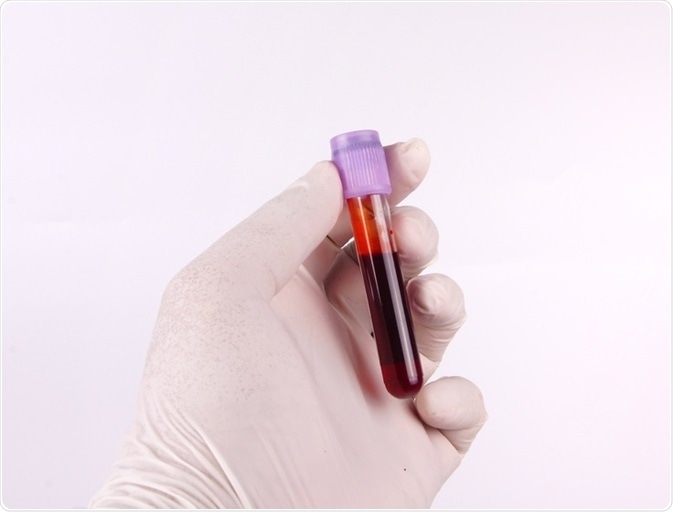The rise in cannabis use has led to a number of online shops offering cannabinoid products, including cannabidiol (CBD), that have not undergone diligent pre-clinical and clinical testing. In response, scientists have developed an assay to measure the concentration of cannabinoids in human blood plasma during the use of cannabinoid-containing products.
The most abundant phytocannabinoids are Δ9-Tetrahydrocannabinol (THC) and cannabidiol (CBD) and these are metabolized into monohydroxylated and carboxy metabolites by cytochrome P450 isozymes, such as CYP2C9, CYP2C19, and CYP1A1. The assay developed by the authors provides a way to measure the CBD and THC in the blood plasma.
 Image Credit: umarazak/Shutterstock.com
Image Credit: umarazak/Shutterstock.com
Preparing the samples
The donated plasma was frozen and shipped to the lab and then to extract the plasma, it was first mixed with either calibration standard or methanol, and working internal standard solution was added. The sample was then shaken and centrifuged to obtain the supernatant. This supernatant was dried under nitrogen to obtain dried samples. These samples were further reconstituted with acetonitrile and water.
How much CBD and THC enters the bloodstream?
These samples were then analyzed using a UHPLC system under isocratic conditions. The analytes were detected using electrospray ionization mode in the mass spectrometer. While developing the method, the authors also optimized chromatography, mass spectrometer conditions.
Three different samples were analyzed and compared to internal standards. In addition to CBD and THC, other cannabinoids with similar and different transitions of mass were included to ensure that their presence did not interfere with the assay, and for qualitative monitoring.
Retention times were used to identify the analytes. The retention time for CBD and THC were 2.27 and 4.45 min, while the internal standard, including D3-CBD and D3-THC, eluted at 2.25 and 4.42 min.
THC and CBD also had distinct chromatography peaks that did not interfere with other cannabinoid compounds. As CBD and THC have the same mass, they were present in the same mass spectrometer selected channel.
The plasma concentration of CBD was 7 ng/ml and 5.2ng/ml for THC. These numbers are similar to what has been previously reported, reinforcing the results of the study.
Validation and accuracy of the assay
The assay was calibrated and calibration curves were created using the peak area ratios versus analyte concentration. The intra-and inter-day accuracy and precision were less than 5.6%. The accuracy of the assay was from -4.6% to 9.2% and the precision was from 1.14% to 13.1%.
Stability of the sample
The sample was analyzed for the stability of CBD and THC at different conditions. The difference in the stability of samples and freshly prepared samples ranged from -12.6% to 9.8%, suggesting that the samples were degrading within acceptable limits. CBD and THC were stable in plasma for a month when kept in -70°C, could survive three cycles of freeze and thaw, and sit on the bench for 24 hours when kept at 20 °C.
This study shows the relevance of a UHPLC-MS/MS method to determine the levels of CBD and THC from human blood plasma. This can also be used to monitor other cannabinoid compounds, such as THVC, CBN, CBDA, and metabolites of THC, such as 11OH-THC and THC-COOH. The assay could detect as low as 0.5ng/mL concentrations of CBD and THC, thus providing a method to determine variabilities and levels of cannabinoids in various products.
Further Reading
Last Updated: Feb 1, 2021